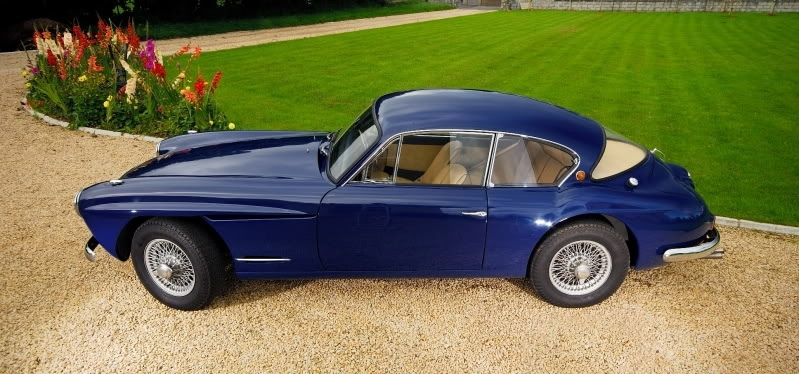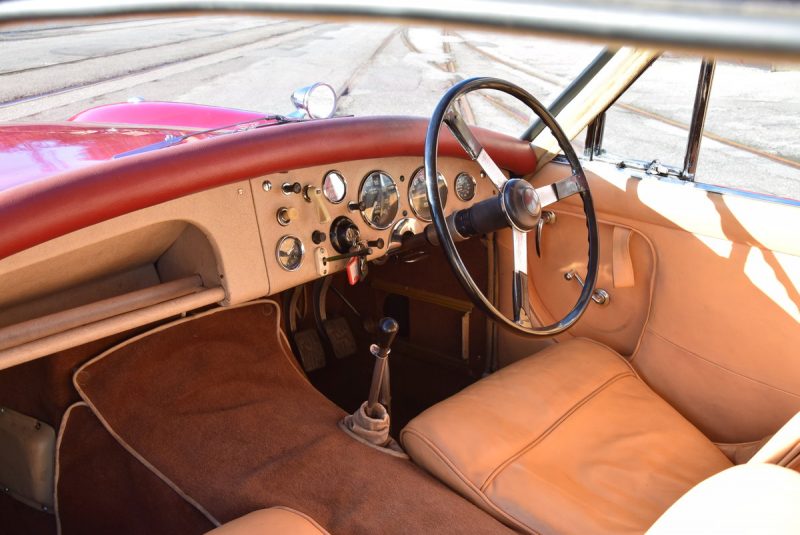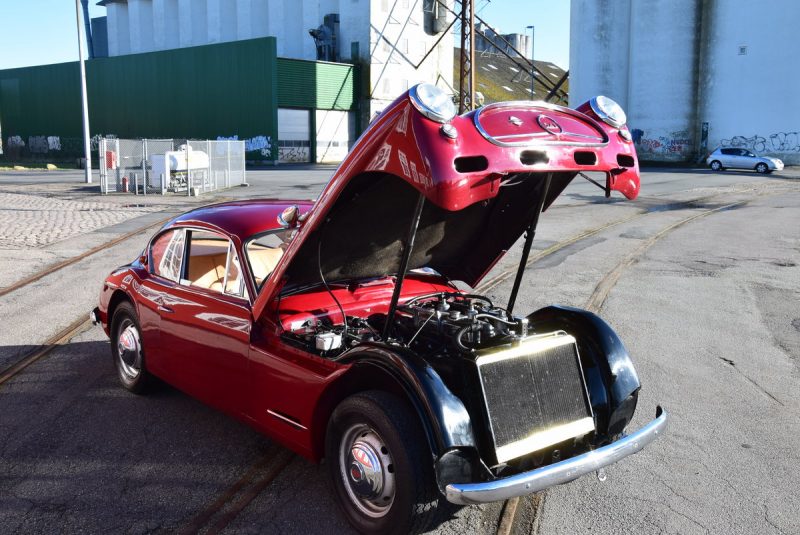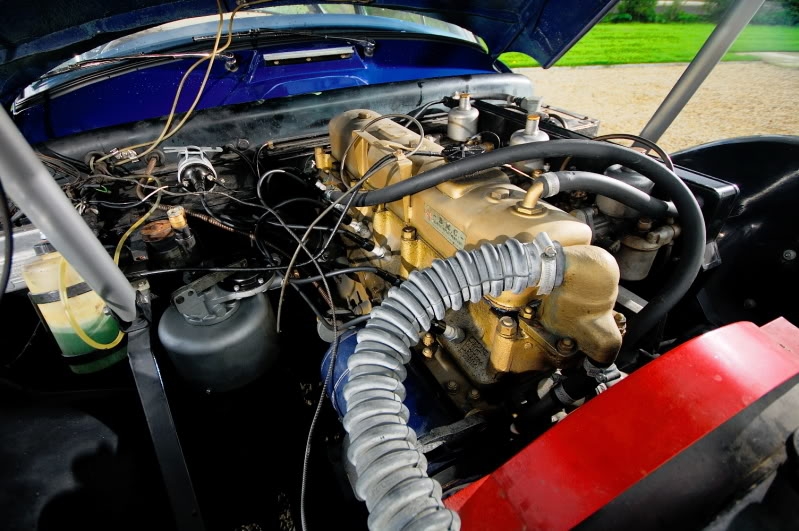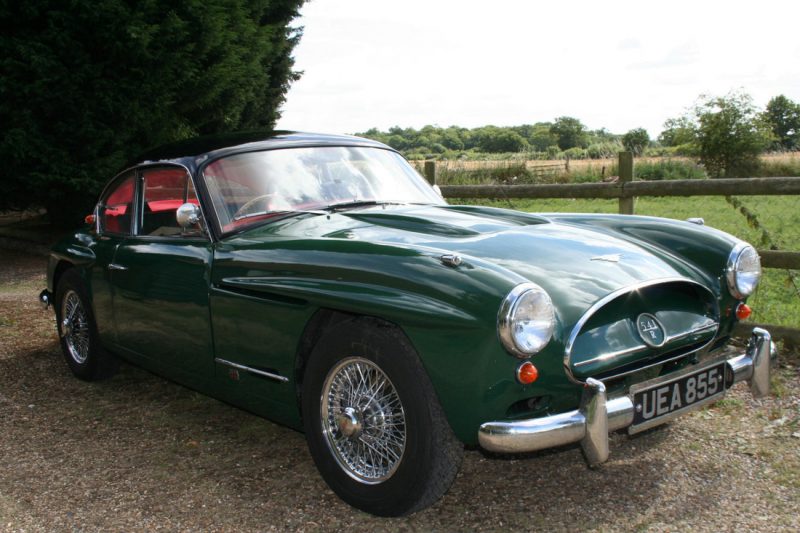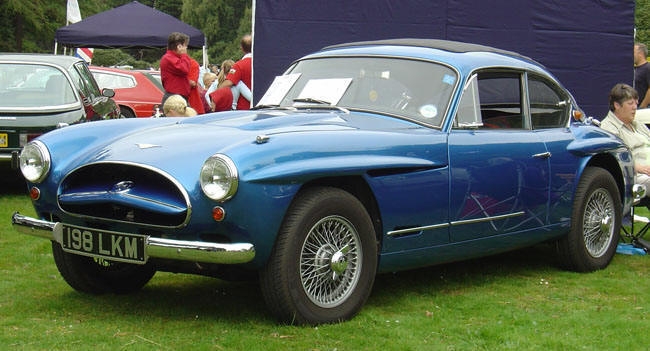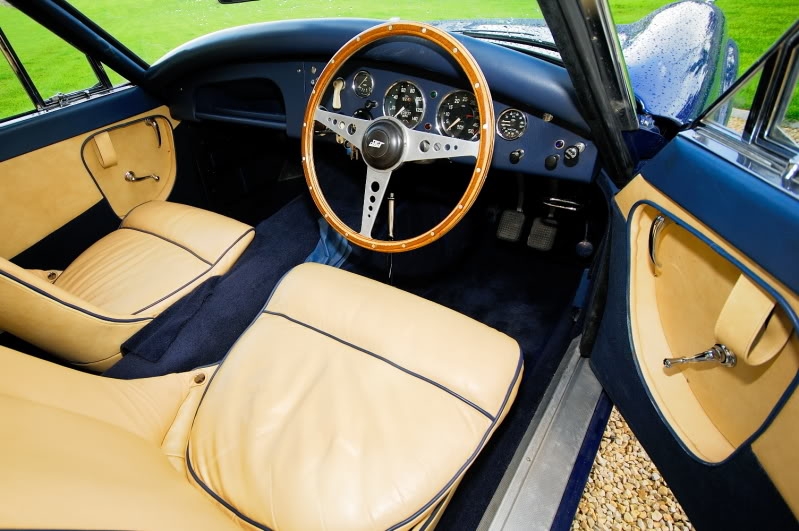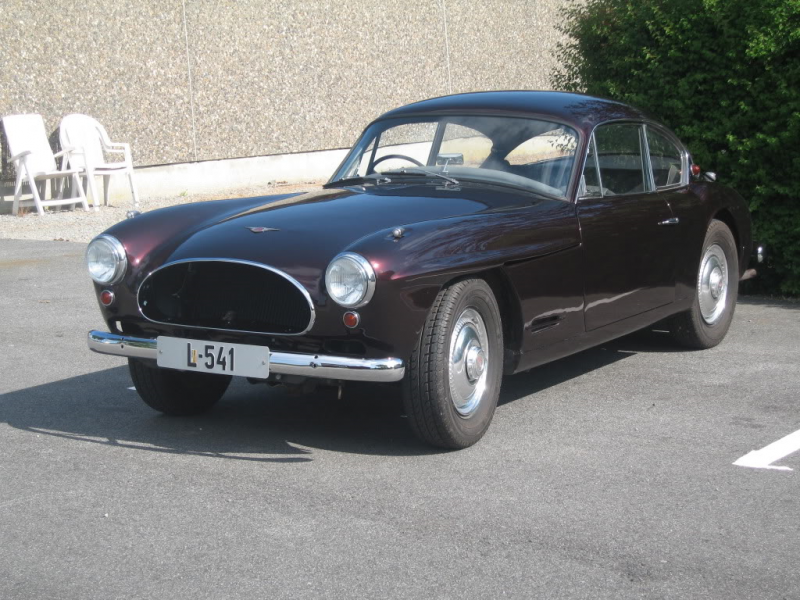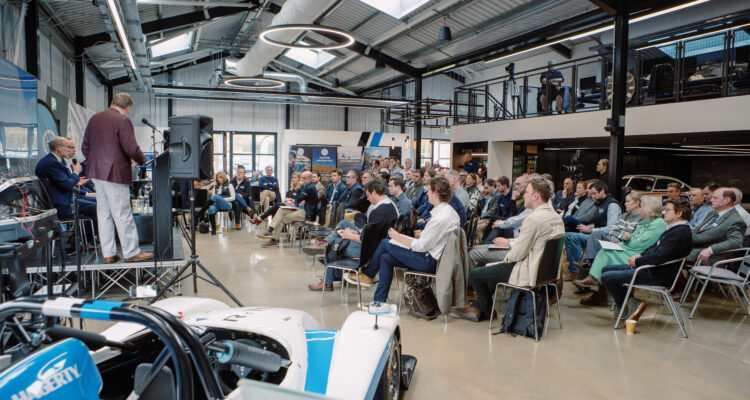541 – Jensen’s Coupe De-Grace
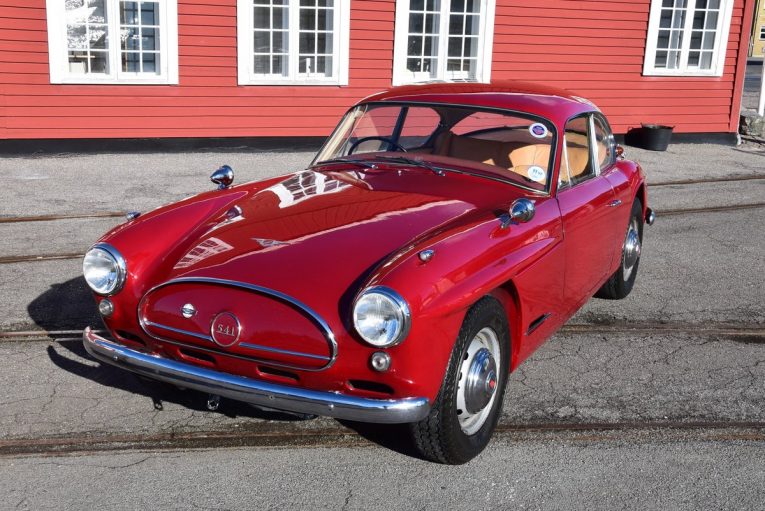
Written by John Byrne
Much underrated in recent times but fast becoming more appreciating classics, these exquisitely hand-made GT cars are a real gem coming from one of the most evocative British names in the realm of big, fast grand-tourers. Over the years, Jensen have been associated with some of the most luxurious and desirable cars of all. Just in time for the Earls Court Motor show in 1953, specialist car firm Jensen previewed an all-new GT car in prototype form, joining the original Interceptor model.
The acclaimed designer at Jensen, Eric Neale, sketched out a streamlined closed-coupled coupe, clothed initially in traditional aluminium (apart from a GRP boot-lid), which had preceded the car’s official launch at the 1954 London Motor show, where it appeared in the then-revolutionary material of fiberglass on a separate chassis. This new Jensen was christened the 541, thus named because it was the first prototype made in 1954. The 541 was innovative in that it was the first European production car to feature a fiberglass body and also the first four-seater in the world with such a body, quite remarkable at the time.
On the production model, the front section is a vast one-piece glass-fibre moulding; apart from aluminium in the doors, it includes the roof (incorporating the scuttle) and the entire rear end that was of high-quality construction. The entire front-end could be easily raised for engine access, while the body was mounted onto a newly designed and immensely stiff Jensen tubular-framed chassis with an overall combined weight of 28cwt (1400kg). The 541 had a low-drag shape, Jensen having recorded a lowest ever 0.39Cd at the Longbridge wind tunnel, further aided by the horizontally pivoted front intake flap which can be dropped down from a control lever under the dash.
The car’s cabin is spacious enough despite a prominent transmission tunnel, with bespoke leather upholstery as standard that includes adequately shaped rear seating and front bucket seats. Frontal vision is good; however rearward vision is slightly hampered by the wraparound Perspex screen that forms part of the sweeping roofline, which is elegantly tapered to the rounded tail.
The 541’s chief engineer, Colin Reikie, adapted an Austin drivetrain and Austin A70/A90 components for the suspension set-up. The well-proven 3,993cc in-line, straight-six pushrod engine from the previous Interceptor was retained (originally derived from a truck and lifted from the big Austin Sheerline/Princess limousines), which nestles well-behind the front axle line for almost ideal 50/50 weight distribution when the 541 is laden.
This motor has the ‘fiscal growl’ of a simple straight six and fires up instantly upon using the push-button starter on the dash. It had ample torque and the longest stroke of any engine of the day at 111mm, and with a skimmed cylinder head it delivered 117bhp with the use of triple horizontal SU carburettors on a special manifold (which helped lower the bonnet line), driving through a four-speed manual transmission with optional Laycock de Normanville overdrive. The 541 adopted a cam-and-roller type steering, conventional coil independent wishbone front suspension and a half-elliptic sprung hypoid-bevel rear axle, as well as large Girling servo-assisted drums.
From 1956 the base model was supplemented by the “De Luxe’, which was particularly noted for being the first British production car to have Dunlop disc brakes on all four wheels. In this version a higher output was achieved by way of an improved compression head, producing 130bhp at 4,000rpm for the DS5 unit. This model was luxuriously appointed (some with a wooden fascia) and had twin exhausts and overdrive as standard along with the option of 15inch wire wheels (that required a special adapter to attach them to each axle).
It was capable of reaching more than 115mph, although its engine was still no match for the Jaguar XK140 which was strictly only a two-seater. However, the top-of-the-range 541R quickly superseded this in 1957, with its precise rack-and-pinion steering system and desirable Jaguar Moss four-speed synchromesh gearbox, with overdrive operated by a switch on the dash. The engine was further tweaked using separate inlet ports, twin sloping SU carbs switched to the right of the engine and a reworked cylinder head, which boosted the compression ratio to produce a respectable 150bhp (gross) at 4,100rpm. Only 43 of the total 193 541Rs built used this more powerful DS7 unit, as supplies ceased for technical reasons at Austin and most remained fitted with the DS5 unit.
Other design features that distinguish the 541R from earlier models are twin bonnet bulges, more pronounced rear wheel arch blisters and an altered number plate housing on the boot. One of its other interesting design details was the top-mounted hinges on the boot lid, rather than on the bottom, to make it more accessible. The front suspension on the 541R was up rated with Armstrong piston-type dampers instead of the telescopic units used on the standard version. The car was lavishly finished in leather and for the driver, its cockpit contained a logical binnacle display by Jaeger that had three small gauges (oil pressure, coolant temperature and fuel), a central clock and two larger gauges for speedometer and tachometer up to 5000rpm, (with a redline indicated at 4,250rpm). The Autocar of the day raved that the 541R was the fastest four-seater that it had ever tested, when it reached more than 125mph! It was a genuine high-performance GT and when it was released it was priced at £2,886; that was compared to £2,153 for the base model.
In general, the 541 was well-regarded as an excellent long-range touring car, with ride and road holding comparable to the best contemporaries of the period. These cars are widely considered to be one of the best-looking coupes of the fifties and are unmistakable in profile. The base model was discontinued from 1958, while the last of the line, the 541S, replaced the 541R in 1960. Though similar in appearance, this had a longer, wider body and offered increased headroom but never recaptured the earlier elegance. The characteristic air intake in the nose was replaced with a more straightforward oval-shaped grille. The 541S was installed with the same DS5 engine as the ‘R’ and although performance was down, it was even better equipped with such features as adjustable front armrests, seatbelts (the first British car to have them fitted as standard), a lockable glove compartment and a padded windscreen surround.
The car’s limited-slip differential and Rolls-Royce-modified GM Hydramatic automatic transmission were also rare for the time. There were only 22 of these cars offered with the manual transmission out of 127 examples built, and when production ended in 1963 only 546 of all models had been built. As an aftermarket option, a Webasto-type canvas sunroof was available for most models if the owner desired it. More recently, the actual 1953 prototype was sold in March 2008 at auction for the princely sum of £30,785.
During the late eighties, its previous owner had performed a nine-year restoration on the car before it went on display at the Glasgow Motor Museum for several years. These were the last Jensen cars to use a six-cylinder engine, after which the firm moved on to a much more powerful Interceptor GT model. Today, the 541 remains highly prized and much-admired among enthusiasts and collectors alike
We would like to extend a special thanks to the JOC 541 Register for all their kind assistance in compiling this piece.

